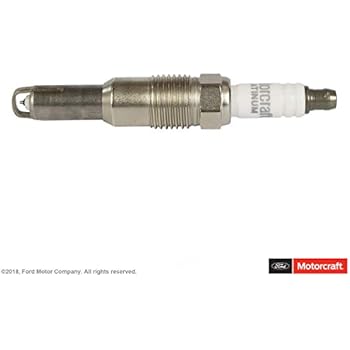Platinum spark plugs are known for their durability, efficiency, and excellent performance in internal combustion engines. Unlike their copper or iridium counterparts, platinum spark plugs offer a longer lifespan, making them a popular choice among car enthusiasts and everyday drivers alike. This guide aims to provide comprehensive insights into maintaining platinum spark plugs, ensuring optimal engine performance and longevity.
Understanding Platinum Spark Plugs

Before diving into maintenance tips, it’s essential to understand what platinum spark plugs are and how they function. Platinum spark plugs feature a platinum disc on the center electrode, which enhances their durability and conductivity. This design allows for better ignition and fuel efficiency, resulting in lower emissions and improved engine performance.
- Durability: Platinum spark plugs can last up to 100,000 miles compared to traditional copper plugs, which typically last around 30,000 miles.
- Performance: The excellent thermal conductivity of platinum promotes efficient combustion, leading to better acceleration and fuel economy.
- Resistance to Fouling: Platinum’s properties make these spark plugs less prone to fouling, which can lead to misfires and reduced engine performance.
Signs Your Spark Plugs Need Maintenance

Recognizing the signs that your platinum spark plugs need maintenance is crucial. Ignoring these signs can lead to poor engine performance and costly repairs. Common indicators include:
- Engine Misfires: If your engine hesitates or stutters during acceleration, it could indicate a failing spark plug.
- Reduced Fuel Efficiency: A noticeable drop in miles per gallon (MPG) can signal that your spark plugs are not firing optimally.
- Rough Idling: If your engine shakes or vibrates while idling, it could be due to worn spark plugs.
- Difficulty Starting: Trouble starting your vehicle or prolonged cranking can be a sign of spark plug issues.
Maintenance Tips for Platinum Spark Plugs

Maintaining platinum spark plugs involves several steps, from proper installation to regular inspections. Here are essential tips to keep your spark plugs in top condition:
1. Regular Inspections

Inspecting your platinum spark plugs regularly can help you catch potential issues early. Aim to check them every 30,000 miles or as recommended in your vehicle’s owner manual. During the inspection, look for:
- Wear and tear on the electrode
- Carbon buildup or fouling
- Physical damage such as cracks or chips
2. Proper Installation Techniques

Installing spark plugs correctly is vital for performance and longevity. Follow these steps for proper installation:
- Ensure the engine is cool before starting any work.
- Use the correct spark plug socket and torque wrench to avoid over-tightening.
- Apply anti-seize compound on the threads to prevent seizing.
- Set the gap according to the manufacturer’s specifications using a gap gauge.
3. Cleanliness is Key
Keeping your engine compartment clean can help ensure that your spark plugs perform optimally. Consider the following:
- Use compressed air to blow out any debris from the spark plug wells before removing the plugs.
- Avoid touching the electrode or insulator with your fingers, as oils can cause fouling.
- Regularly clean the engine bay to prevent buildup that can affect ignition performance.
4. Replace When Necessary
Even though platinum spark plugs have a long lifespan, they will eventually wear out. Signs that it’s time for a replacement include:
- Visible wear on the electrode
- Increased engine misfires
- Poor fuel economy compared to previous performance
When replacing spark plugs, always use the same type and specifications as recommended for your vehicle. Mixing types can lead to performance issues.
Case Study: Impact of Well-Maintained Spark Plugs
Consider the case of a 2015 Toyota Camry, which was experiencing reduced fuel efficiency and occasional misfires. The owner, following the advice of a mechanic, decided to inspect and replace the vehicle’s platinum spark plugs after 80,000 miles. Upon removal, the plugs showed noticeable wear and carbon buildup. After replacing them with new platinum spark plugs, the owner reported:
- An improvement in fuel efficiency from 24 MPG to 28 MPG.
- Elimination of engine misfires and smoother acceleration.
- A reduction in engine vibrations while idling.
This case illustrates the significant impact that maintaining and replacing spark plugs can have on vehicle performance.
Statistics on Spark Plug Maintenance

According to the American Automobile Association (AAA), vehicle maintenance is crucial for ensuring safety and performance. The following statistics highlight the importance of spark plug maintenance:
- 73% of drivers experience decreased fuel efficiency due to improper maintenance, including spark plug issues.
- Regular maintenance can improve vehicle performance by up to 20%.
- Neglecting spark plug replacement can lead to engine damage costing an average of $2,000 in repairs.
Maintaining platinum spark plugs is essential for ensuring optimal engine performance, fuel efficiency, and longevity. By regularly inspecting your spark plugs, following proper installation techniques, keeping your engine clean, and replacing worn plugs promptly, you can significantly enhance your vehicle’s performance. The case study and statistics provided in this guide emphasize the importance of proactive maintenance. Remember, a well-maintained vehicle is not just about performance; it also contributes to safety and can save you money in the long run. By prioritizing spark plug maintenance, you invest in the overall health of your engine and enjoy a smoother, more efficient driving experience.


